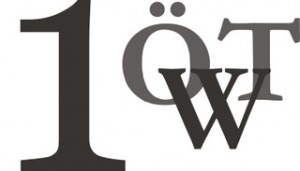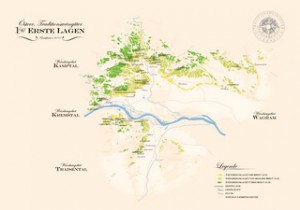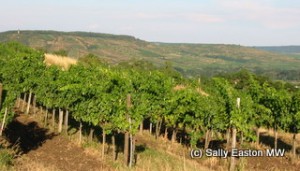Austrian Traditionsweingüter classification system explained
The group of 23 Traditionsweingüter Österreich (traditional Austrian wineries) have announced a single level classification of 52 of their best single vineyard sites in four Danube regions of Kamptal, Kremstal, Traisental and Wagram, starting from the excellent quality 2009 vintage.
 To communicate the ‘premier cru’ sites – Erste Lagen – and the wines to consumers, a trademarked logo is printed alongside the vineyard name on the label. Only the 23 member estates of the Traditionsweingüter Österreich are allowed to use this logo.
To communicate the ‘premier cru’ sites – Erste Lagen – and the wines to consumers, a trademarked logo is printed alongside the vineyard name on the label. Only the 23 member estates of the Traditionsweingüter Österreich are allowed to use this logo.
The classification has been a while in the making. In 1992 seven wineries in the Danube region founded the group, to make wines which reflect their origin, and with the long-term aim of identifying their best vineyard sites, according to both ripeness and terroir, or specific site.
Willi Bründlmayer, of one of the original founding wineries, Weingut Bründlmayer, said “Traditionsweingüter Österreich was founded to work on vineyard classification in the beginning. We were also doing tastings and promotions together, but the basic focus was vineyard classification.” He added “all the vineyards have a long tradition, for many years making very good grüner veltliner or riesling.” Weingut Hiedler was another founding member. Maria Angeles Hiedler said “after 20 years we know which sites are continually producing top wines.”
The group was in part prompted to announce their classification by the introduction of DAC appellations in parts of the Danube region, because, said Michael Moosbrugger, president of the Traditionsweingüter Österreich association (and general manager of Schloss Gobelsburg), the “Erste Lage is the logical continuation of the DAC system.”
 The DAC in Kamptal, Kremstal and Traisental is only for grüner veltliner and riesling, and so is the new vineyard site classification. The classification includes four sites in Wagram, which does not have a DAC appellation, but is in the Danube basin. Moosbrugger said “we apply the same rules as for the other regions, so grüner veltliner and riesling, dry.” As the DAC system is evolving, there is a chance that in the future Wagram will join the DAC.
The DAC in Kamptal, Kremstal and Traisental is only for grüner veltliner and riesling, and so is the new vineyard site classification. The classification includes four sites in Wagram, which does not have a DAC appellation, but is in the Danube basin. Moosbrugger said “we apply the same rules as for the other regions, so grüner veltliner and riesling, dry.” As the DAC system is evolving, there is a chance that in the future Wagram will join the DAC.
Bründlmayer emphasised the wines from Erste Lage “must stay in the DAC taste frame and be typical for the year.”
Moosbrugger explained that such linking of site and origin with wine was also something of a reversion to how Austrian wines used to be known. He said “until World War II, Austrian wines were known by village names, and with a stylistic expression, such as Kremser, Langenloiser and Gumpoldskircher. Everyone more or less knew what style of wine to expect.”
After the second world war, with increasing mechanisation and the ready availability of tractors in the classic mixed agriculture farms, Moosbrugger said “vineyards were replanted [to allow use of tractors], and individual varieties were planted [in blocks], not as field blends. No one knew which direction things would develop, so farmers still planted all the different grape varieties” which helps to explain the plethora of grape varieties grown in many regions.
By the 1960s and 70s farmers were learning which were the best-adapted varieties to their regions, so by “the end of the 80s, only grüner veltliner and riesling were left” in the Danube area, said Moosbrugger.

1er Cru Kamptal vineyards
For these two grape varieties, he said there are two archetypes of vineyard in the Danube region, “terraces, on the river Danube and its tributaries, of stones and low water supply which are ideal for riesling, and vineyards based on loess and clay – deeper soil with a better water supply – which are ideal for grüner veltliner.”
What with the introduction of DAC and regions looking to identify the continually best-performing sites, Moosbrugger said “we’re in the middle of a change from explaining Austrian wine culture from grapes to origin. But we cannot stop at the regional level. As top producers, we are working with single vineyards.”
Neither the group nor the classification is a closed shop. Moosbrugger said they are completely open and would be happy and hopeful for others to join in the conversation.
Whereas the DAC appellations are legally defined in law, this producer-led classification of 52 sites has no legally defined basis. Mind you, the 1855 Bordeaux classification started off as a composite price list of the time drawn up by the industry. It has largely withstood the test of time. The new Erste Lagen also tend to be the more highly priced wines from the Danube area. And the group does not rule out a legal definition, though, Moosbrugger said “we have started a process that I expect to last for the next 20 to 30 years. The classification is far from finished.” But certainly, he added, an official classification is one of the long term aims.
At the moment the trademarked logo is the obligatory and visible part of the classification system. The logo indicates the wine comes from one of the best-regarded 9% of vineyards in the four Danube regions.
Vineyard classification, 2010
| Region | Village | Vineyard name | Size of vineyard site (ha) | Producers | |
|
1 |
Kamptal | Kammern | Gaisberg |
30 |
Gobelsburg, Dolle |
|
2 |
Kamptal | Kammern | Grub |
5 |
Gobelsburg |
|
3 |
Kamptal | Kammern | Lamm |
20 |
Gobelsburg, Bründlmayer, Hirsch, Jurtschitsch |
|
4 |
Kamptal | Kammern | Renner |
19 |
Gobelsburg |
|
5 |
Kamptal | Langenlois | Dechant |
20 |
Jurtschitsch |
|
6 |
Kamptal | Langenlois | Käferberg |
10 |
Bründlmayer, Loimer, Jurtschitsch |
|
7 |
Kamptal | Langenlois | Kittmannsberg |
10 |
Hiedler |
|
8 |
Kamptal | Langenlois | Loiserberg |
35 |
Jurtschitsch |
|
9 |
Kamptal | Langenlois | Schenkenbichl |
30 |
Jurtschitsch |
|
10 |
Kamptal | Langenlois | Seeberg |
30 |
Loimer |
|
11 |
Kamptal | Langenlois | Spiegel |
35 |
Loimer, Jurtschitsch, Ehn |
|
12 |
Kamptal | Langenlois | Steinhaus |
18 |
Hiedler |
|
13 |
Kamptal | Langenlois | Steinmassl |
17 |
Loimer |
|
14 |
Kamptal | Langenlois | Thal |
8 |
Hiedler |
|
15 |
Kamptal | Strass | Gaisberg |
30 |
Hiedler, Dolle |
|
16 |
Kamptal | Strass | Ofenberg |
5 |
Topf |
|
17 |
Kamptal | Strass | Wechselberg Spiegel |
1.8 |
Topf |
|
18 |
Kamptal | Zöbing | Gaisberg |
25 |
Hirsch |
|
19 |
Kamptal | Zöbing | Heiligenstein |
35 |
Bründlmayer, Jurtschitsch, Ehn, Hirsch, Topf, Hiedler, Dolle, Gobelsburg |
|
20 |
Kremstal | Angern | Gaisberg |
5 |
Geyerhof |
|
21 |
Kremstal | Furth | Gottschelle |
20 |
Malat, Dr. Unger, Stift Göttweig |
|
22 |
Kremstal | Furth | Höhlgraben |
10 |
Malat |
|
23 |
Kremstal | Furth | Oberfeld |
25 |
Dr. Unger |
|
24 |
Kremstal | Furth | Silberbichl |
25 |
Malat, Stift Göttweig |
|
25 |
Kremstal | Gedersdorf | Spiegel |
7.5 |
Mantler |
|
26 |
Kremstal | Gedersdorf | Steingraben |
5.5 |
Mantler |
|
27 |
Kremstal | Gedersdorf | Mosburgerin |
3.6 |
Mantler |
|
28 |
Kremstal | Gedersdorf | Wieland |
9 |
Mantler |
|
29 |
Kremstal | Hollenburg/Krems | Goldberg |
1.5 |
Geyerhof |
|
30 |
Kremstal | Krems | Kapuzinerberg |
5 |
Fritsch |
|
31 |
Kremstal | Krems | Lindberg |
7 |
Salomon |
|
32 |
Kremstal | Krems | Wachtberg |
33 |
Salomon, Stadt Krems |
|
33 |
Kremstal | Oberfucha/Furth | Kirchensteig |
1 |
Geyerhof |
|
34 |
Kremstal | Oberfucha/Furth | Steinleithn |
1.5 |
Geyerhof |
|
35 |
Kremstal | Rohrendorf | Breiter Rain |
5 |
Sepp Moser |
|
36 |
Kremstal | Rohrendorf | Gebling |
50 |
Moser Martin, Sepp Moser |
|
37 |
Kremstal | Rohrendorf | Schnabel |
2.8 |
Sepp Moser |
|
38 |
Kremstal | Senftenberg | Piri |
50 |
Nigl |
|
39 |
Kremstal | Senftenberg | Hochäcker |
10 |
Nigl |
|
40 |
Kremstal | Senftenberg | Pellingen |
10 |
Nigl |
|
41 |
Kremstal | Stein | Gaisberg |
5 |
Dr. Unger |
|
42 |
Kremstal | Stein | Kögl |
13 |
Salomon, Stadt Krems |
|
43 |
Kremstal | Stein | Pfaffenberg |
13 |
Salomon |
|
44 |
Kremstal | Krems | Grillenparz |
5 |
Stadt Krems |
|
45 |
Traisental | Getzersdorf | Berg |
20 |
Huber |
|
46 |
Traisental | Inzersdorf-Getzersdorf | Rothenbart |
6 |
Neumayer |
|
47 |
Traisental | Inzersdorf-Getzersdorf | Zwirch |
15 |
Neumayer |
|
48 |
Traisental | Reichersdorf | Alte Setzen |
5 |
Huber |
|
49 |
Wagram | Feuersbrunn | Rosenberg |
35 |
Ott |
|
50 |
Wagram | Feuersbrunn | Spiegel |
37 |
Ott |
|
51 |
Wagram | Kirchberg am Wagram | Schlossberg |
30 |
Fritsch |
|
52 |
Wagram | Großweikersdorf | Mordthal |
35 |
Fritsch |
Source: M. Moosbrugger, pers. comm., July 29, 2010



